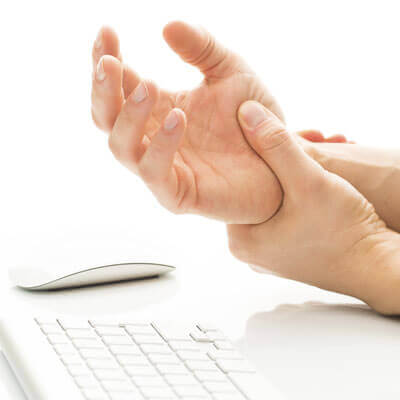 Dupuytren’s Contracture is a genetic condition that causes the connective tissue in the palm and fingers to thicken and tighten. Over time, this can form firm nodules and cords under the skin, leading to bent or contracted fingers. The pinky and ring finger are most often affected, though other fingers can also be involved. Approximately five percent of people experience this condition to some degree.
Dupuytren’s Contracture is a genetic condition that causes the connective tissue in the palm and fingers to thicken and tighten. Over time, this can form firm nodules and cords under the skin, leading to bent or contracted fingers. The pinky and ring finger are most often affected, though other fingers can also be involved. Approximately five percent of people experience this condition to some degree.
The progression of Dupuytren’s can make simple tasks like grasping objects or shaking hands difficult. While there is no cure, early and consistent management can often help maintain function and slow the condition’s impact.
Dr. Berenstein’s Experience
Since first writing about Dupuytren’s Contracture in 2013, Dr. Berenstein has met many patients from Downtown Toronto and surrounding areas who sought guidance for this condition. Some have even reached out from other parts of the world after learning about his conservative approach.
He emphasizes that his care methods are focused on ongoing management and patient comfort rather than a cure.
An Individualized Care Process
Dr. B’s care process typically combines several conservative methods.
Self-care plays an important role as well. He encourages patients to stretch and mobilize their finger joints between visits, helping them stay active in their care and maintain flexibility over time.
Results and Ongoing Management
Many patients report softer nodules, greater comfort, and improved range of motion after consistent care.
Because Dupuytren’s Contracture is progressive, ongoing management remains key.
Discover a Conservative Path Forward
Dupuytren’s Contracture doesn’t have to mean loss of hand function. With professional assessment and consistent, personalized care, many people find lasting comfort and improved mobility.
Schedule a consultation with Dr. B to learn how individualized care may help you manage Dupuytren’s Contracture.
